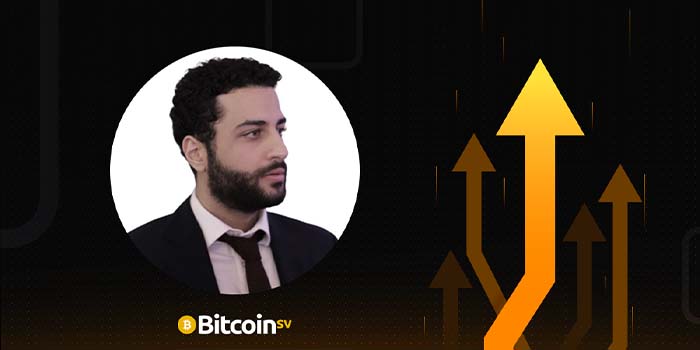
Bitcoin News
Dr Craig Wright explains how Bitcoin SV and IPv6 will change the Internet
Dr Craig S Wright, Chief Scientist at nChain, explains how Bitcoin SV and IPv6 can deliver a true peer-to-peer Internet.
The Internet as we know it today, with its centralised data repositories and third party-facilitated communication, was not always designed in this way. Many aspects of modern networking have come about to cope with the rapidly reducing address space available under the IPv4 standard.
With billions of devices being connected to the Internet and more coming online every day, the 32-bit address space defined by IPv4 meant that we quickly ran out of unique addresses by which to address individual devices. This was temporarily solved by Network Address Translation (NAT) a method by which a centralised service modifies the IP headers of packets en-route to ensure they reach the correct destination.
However, this is an unnecessary inefficiency when compared with the peer-to-peer communication facilitated by IPv6 – an Internet Protocol version that defines 128-bit IP addresses and can account for an almost limitless number of unique devices, making them directly addressable over the Internet.
Support for IPv6 is growing around the world as major governments and Internet companies switch to this more future-proof standard. As IPv6 adoption continues to grow, the full potential of the original Bitcoin protocol to act as an end-to-end model of data and payment communication is also unlocked.
Bitcoin SV (BSV) is the blockchain protocol most aligned with the original design of Bitcoin as defined in the original white paper and is capable of unbounded scaling thanks to its lack of artificial block size limits, low transaction fees, high data throughput and support for Simplified Payment Verification (SPV).
To find out more about the original design of Bitcoin as an end-to-end data and payment network and how it the combination of Bitcoin SV and IPv6 can deliver a true peer-to-peer model for the Internet, we spoke to Dr Craig S Wright, Chief Scientist at nChain.
The original Bitcoin design and IPv6
Dr Wright notes that there is a widespread misconception around the way Bitcoin payments are propagated to transaction validators (or miners) which is incongruent with the most efficient peer-to-peer way of settling transactions on the network.
Instead of sending a transaction to intermediary miners who process it before sending it along to the receiver, Bitcoin was always designed to facilitate privacy and user agency by allowing users to send transactions between each other directly.
‘The way that Bitcoin was meant to be, which I described in the early days, was that I send directly to you. I negotiate anything that needs to be kept offline, including invoices, other information, and exchange keys so that we don’t reuse keys,’ Dr Wright says.
‘And once you’ve done that, then you get the transaction like a cheque and process it, and you watch to make sure that there’s no double spend, that it hasn’t been spent beforehand, etc.’
This allows costs and the extent of the information divulged to the network to be negotiated before the transaction is shared with the network, and this process can be completed using tools like SPV without running a fully indexing node.
The way Bitcoin’s transaction settlement works is indicative of its design as a true peer-to-peer system that defies the master-slave model ubiquitous in modern networks.
‘Peer-to-peer has been, like many other terms in Bitcoin and in the industry, misappropriated. Peer-to-peer should be machine-to-machine: no server, no master-slave model,’ Dr Wright says.
‘IPv6 is the only way that in the long term we get back to that model – the model the Internet was meant to be, the model without the Facebooks and the large data centres owning our data, the model where we communicate company-to-company, person-to-person directly.’
For this reason, the Bitcoin protocol was always designed with IPv6 in mind, as the power to individually address devices on a global network is a key element to expanding the blockchain’s utility as a payment and data transaction system for a peer-to-peer Internet.
A true peer-to-peer model for the Internet
Dr Wright notes that a truly end-to-end model for the Internet would see widespread IPv6 adoption and the replacement of legacy networking quirks like NAT-based central servers. When users and machines can interact directly with each other using IPv6 and the BSV blockchain, a whole new host of applications are made possible.
‘What this enables is the ability to have machines that we don’t even know where they are that we can control,’ Dr Wright explains.
‘For instance, I could not have the IP address of my car and yet I could send a message out to the blockchain, to an address that is negotiated as a one-time token. And then the car monitors that and securely receives access. And it could even have a listen-only IP address where there’s no way of sending false information to the vehicle. So, we could actually have a system that is difficult to even find, let alone hack.’
To realise the capabilities of this system, the network it is built upon must be able to scale. For this reason, the Bitcoin SV blockchain’s unbounded scaling makes it by far the best and only contender to facilitate the sheer volume of transaction processing this new peer-to-peer Internet will require.
‘Scale is the most important thing – it isn’t about node count or anything. There is one thing that scale is – how many transactions per second can you do? And the second part is cost,’ Dr Wright says.
‘Right now, there all these arguments about [BTC’s Lightning Network] being a payment methodology. Lightning costs around a dollar per transaction. How is a dollar a transaction going to ever be effective? If you have to choose between $0.25 on Visa or a dollar and Lightning, you’re not going to use Lightning – it’s very simple. The only way this works is at fractions of a cent. And my aim is 1,000th of a cent or less [per transaction].’
Bitcoin SV’s ability to facilitate this volume of transactions may cause some to worry about ‘dust’ and spam attacks, a concern that must be accommodated for in other blockchain protocols which do not scale natively. Dr Wright explains that these types of attacks are not a problem on Bitcoin SV, as large amounts of micro- or nano-transactions are precisely what the network has been designed to process.
‘We have all this stuff right now about people will do spam attacks and dust attacks… they’re not attacks. Every one of them pays a miner.’
‘My answer is if you want to send single satoshis 50 times a day, back and forwards, 50 times a minute, 50 times a second – good. Attack away because I don’t consider that an attack. That’s what the network is for.’



